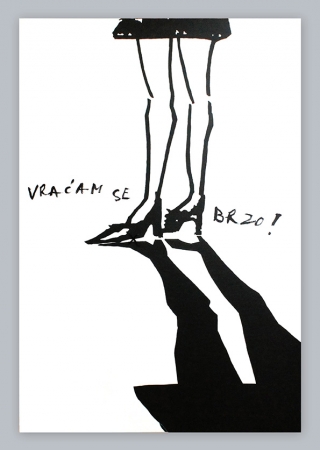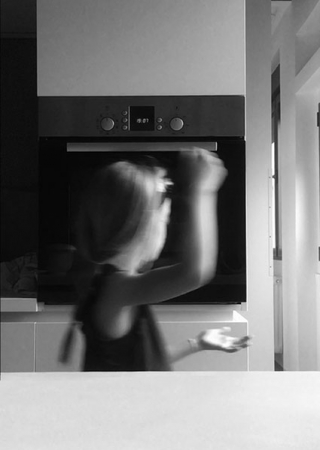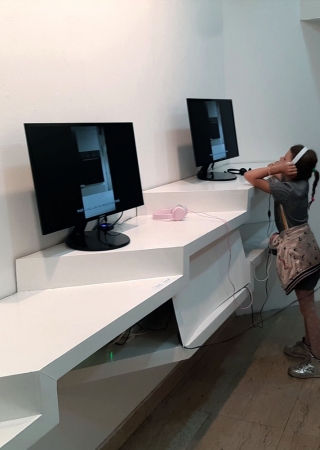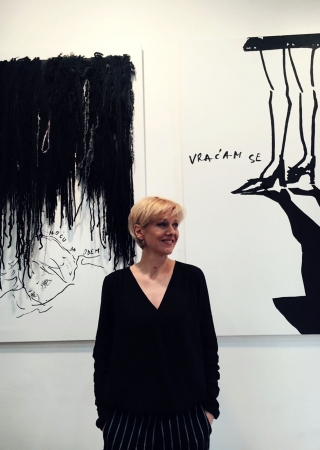Confronting two paintings in the exhibition set-up are two screens showing faces and sounding voices of the author’s daughters who are carrying out performance-like actions that they have come up with on their own and which are recorded in an utterly vernacular manner with a mobile phone. The author’s face is only partially shown in one of the two videos, and there is only a hint of the actual appearance of the person in question. Nonetheless, the author is present here as the subject of the statement (in the work where her daughter is imitating typology and conventional content of her speech) or the statement’s addressee, the person for whom the statement is directly intended (in the work where her other daughter relies on perlocutory force of her statement inducing the mother to respond). These gestures may therefore be interpreted as forms of her indirect self-subjectivisation. The author’s subjective identity is communicating through appearances and voices of her daughters, i.e. their mutual relationships which are conjured up in these works. The works are named after the fragments taken (“You Must Work”) or the totality of the verbal statement (“I’m Sad”) uttered by the video protagonists. As such, they act as a complete counterpoint to the titles and origin of the second pair of works, which are executed in manual techniques bearing her immediate personal hallmark.
Correlation between textual fragments applied onto the canvas in the form of inscriptions “I Want to Go Away” and “I’ll Be Back Soon” points to the impact of the author’s mutually imbalanced aspirations towards positioning and defining of Dasein as a sort of autonomous, stable and self-sufficient identity framework. Dasein is destabilised by the attitude towards those privileged others, represented with their faces and voices in the video, to whose wishes, needs and requests she cannot possibly turn a deaf ear. When their mutually incompatible planes of aspirations are articulated through verbal statements, such as those introduced into the field of painting and which have produced the titles for individual works and the whole exhibition, such a construct is conducive to the emergence of a split subject. Given its divisive character, such a subject breaks the mould into which the fiction of unambiguous conditionality is forced, imposed by everyday chores and constituting formal societal roles, clearly limiting the domain of privacy.
(Tijana Savatić and Stevan Vuković)





